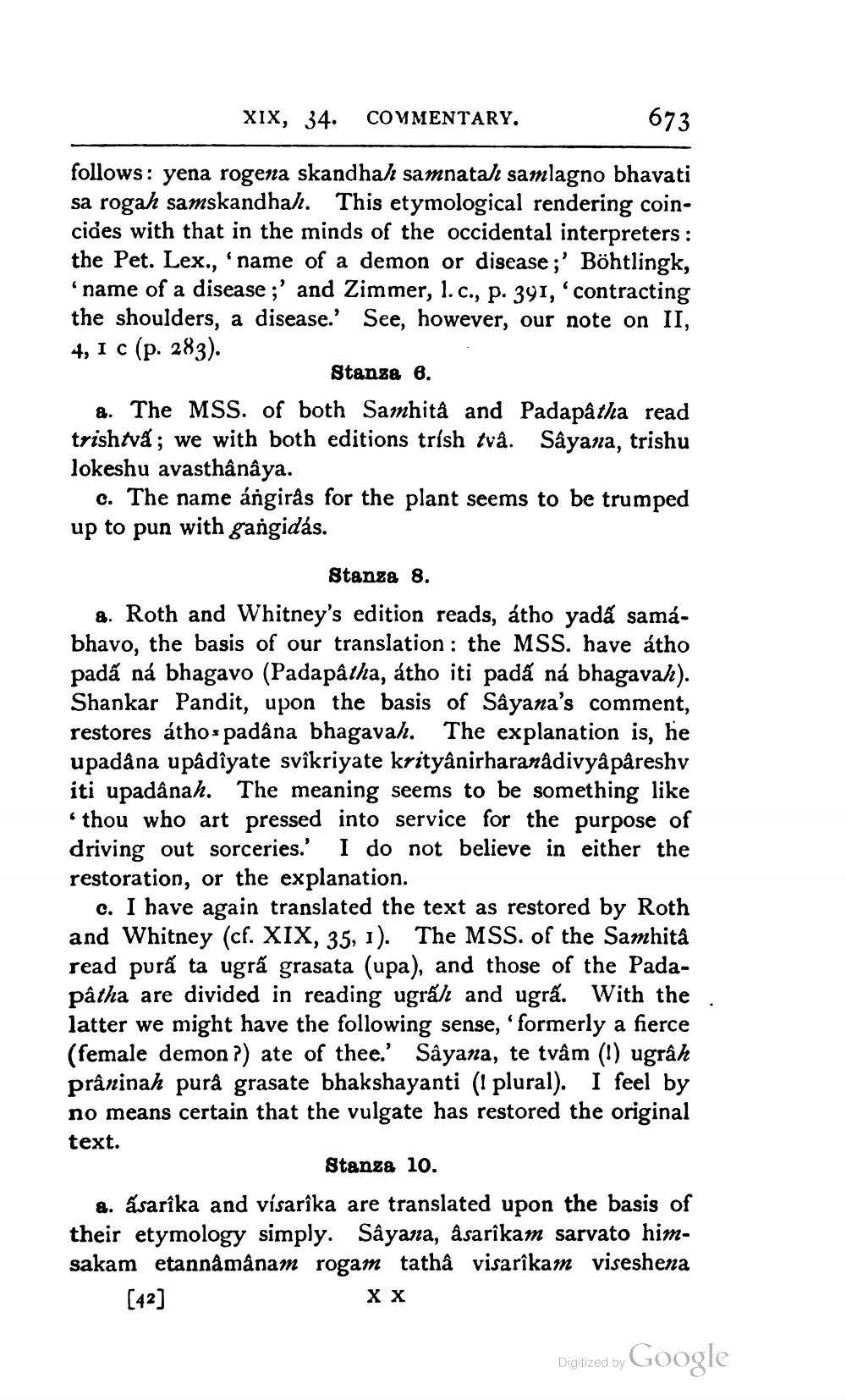________________
xix, 34. COMMENTARY.
673
follows: yena rogena skandhah samnatah samlagno bhavati sa rogah samskandhan. This etymological rendering coincides with that in the minds of the occidental interpreters: the Pet. Lex., 'name of a demon or disease;' Böhtlingk,
name of a disease ;' and Zimmer, 1.c., p. 391, 'contracting the shoulders, a disease.' See, however, our note on II, 4, 1 c (p. 283).
Stanza 6. 2. The MSS. of both Samhita and Padapatha read trishtvá; we with both editions trish två. Såyana, trishu lokeshu avasthânâya.
c. The name ángirås for the plant seems to be trumped up to pun with gangidas.
Stanza 8. a. Roth and Whitney's edition reads, átho yada samabhavo, the basis of our translation : the MSS. have átho padá ná bhagavo (Padapatha, átho iti padá ná bhagaval). Shankar Pandit, upon the basis of Sâyana's comment, restores áthos padâna bhagavah. The explanation is, he upada na upâdiyate svîkriyate krityânirharanâdivyâ pâreshv iti upadânah. The meaning seems to be something like
thou who art pressed into service for the purpose of driving out sorceries.' I do not believe in either the restoration, or the explanation.
c. I have again translated the text as restored by Roth and Whitney (cf. XIX, 35, 1). The MSS. of the Samhita read purã ta ugrá grasata (upa), and those of the Padapâtha are divided in reading ugrál and ugra. With the latter we might have the following sense, formerly a fierce (female demon ?) ate of thee.' Sâyana, te tvâm (!) ugrâh prâninah purâ grasate bhakshayanti (I plural). I feel by no means certain that the vulgate has restored the original text.
Stanza 10. 2. ásarîka and vísarîka are translated upon the basis of their etymology simply. Sâyana, asarîkam sarvato himsakam etannåmânam rogam tatha visarîkam viseshena [42]
xx
Digized by Google




